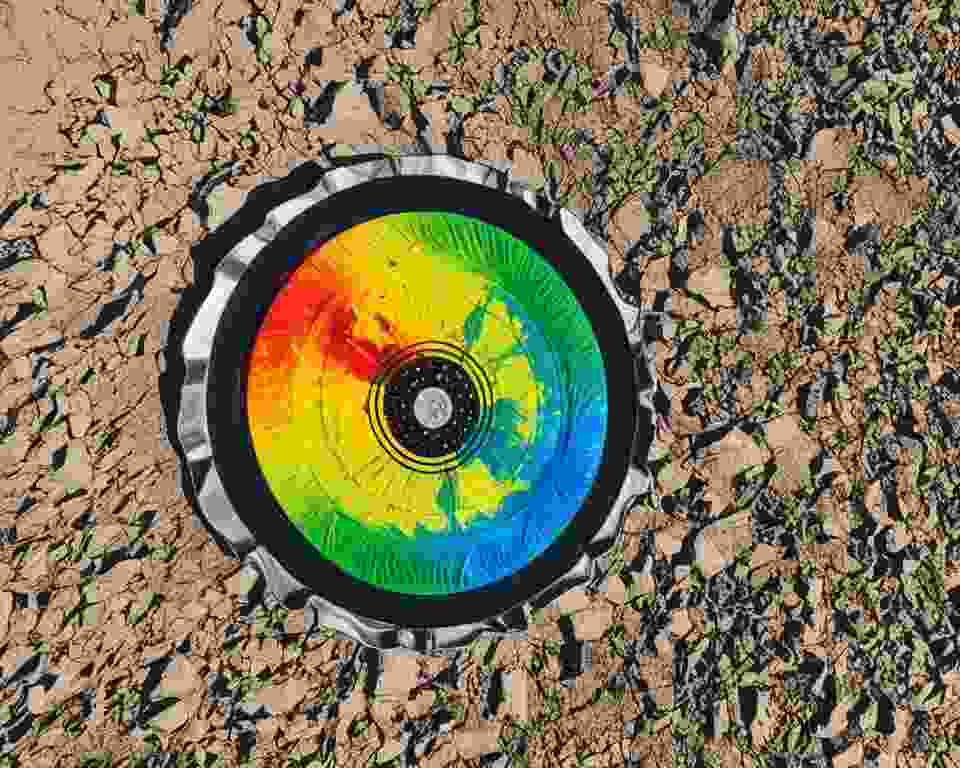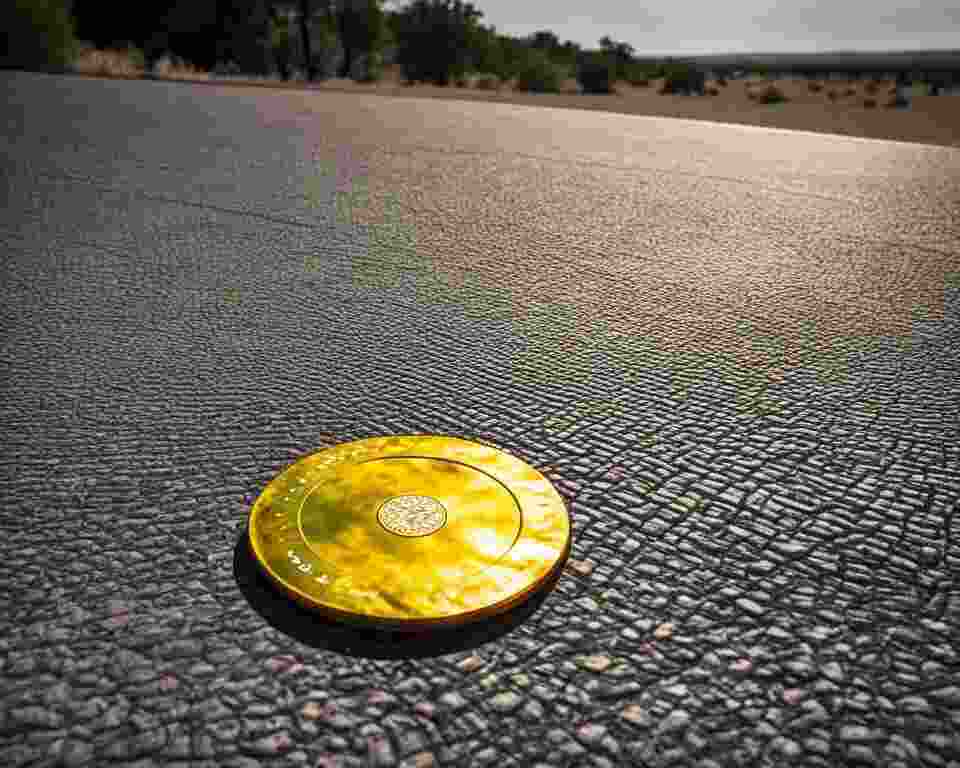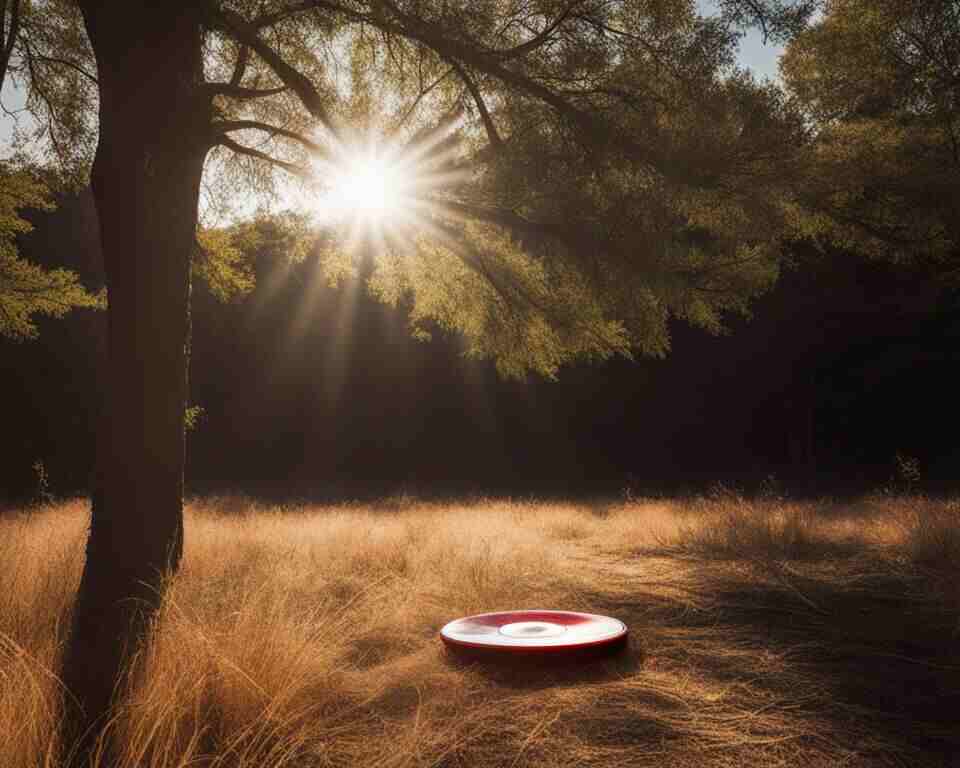Disc golf discs are essential equipment for the sport of disc golf. Like any other sporting equipment, disc golf discs are exposed to various environmental conditions, including heat. Many disc golfers wonder if their discs can melt under high temperatures, impacting their performance on the course.
In this article, we will explore the melting point of disc golf discs, the materials they are made of, and the factors that influence their susceptibility to heat. We will also provide tips for mitigating heat damage and maintaining your discs to ensure optimal performance.
Key Takeaways:
- Disc golf discs can withstand high temperatures, but their melting point depends on the type of plastic used in their construction.
- The materials used in disc golf discs, such as premium plastics and biodegradable options, play a significant role in their durability and temperature tolerance.
- Factors like direct sunlight, temperature exposure, and improper storage can affect a disc’s susceptibility to heat damage.
- Proper maintenance and storage techniques, including avoiding extreme temperatures and using protective cases, can help mitigate heat damage.
- Understanding the impact of heat on disc golf discs allows players to make informed decisions regarding disc selection and care.
Can Disc Golf Discs Melt? Examining the Melting Point
The melting point of a disc golf disc refers to the temperature at which the disc’s material undergoes a physical change from a solid to a liquid state. The exact melting point can vary depending on the type of plastic used in the disc’s construction.

Disc golf discs are typically made from a variety of plastics, each with its own melting point. It’s important to understand the melting point of disc golf discs to prevent potential damage to the discs during play and storage. By examining the melting point, we can determine whether disc golf discs can actually melt under normal playing conditions.
Understanding Disc Golf Disc Materials
The materials used in disc golf discs play a significant role in their durability and temperature tolerance. Disc golf discs are typically made from various types of plastics, each with unique properties. Understanding the different disc materials can help disc golfers make informed choices when selecting discs based on their durability and tolerance to heat.
Premium Plastics: Durability and Temperature Tolerance
Premium plastics, such as Champion or Star plastic, are renowned for their exceptional durability and ability to withstand high temperatures. These plastics are specially formulated to provide superior resistance to wear and tear, ensuring prolonged disc life. When playing in hot weather conditions or on courses that receive direct sunlight, discs made from premium plastics offer increased toughness and stability.
Biodegradable Options: BioFuzion and Eco-Conscious Choices
For players who prioritize environmental sustainability, biodegradable options like BioFuzion provide a compelling choice. These discs are constructed using innovative materials that enhance their biodegradability, reducing their impact on the environment. Disc golfers can enjoy the performance benefits of BioFuzion while supporting eco-conscious practices.
Temperature-Responsive Plastics: From Lucid to Frost
Temperature-responsive plastics are designed to adapt to various climate conditions, maximizing performance regardless of temperature. Discs made from temperature-responsive plastics, such as Lucid or Frost, are formulated with specific additives that allow them to maintain their flight characteristics in hot or cold weather. These discs offer consistent performance and reliable flight patterns, ensuring optimal control and accuracy in any climate.
Factors Influencing Disc Golf Discs’ Susceptibility to Heat
Several factors can influence a disc golf disc’s susceptibility to heat and potential damage. Understanding these factors is crucial for disc golfers who want to protect their discs and ensure optimal performance on the course. In this section, we will explore two key factors: the impact of direct sunlight and temperature on plastic stability, and the role of heat in warping discs during storage.
Impact of Direct Sunlight and Temperature on Plastic Stability
Direct sunlight and high temperatures can have a significant impact on the stability of disc golf discs. Excessive exposure to sunlight and heat can cause the plastic material of the discs to become unstable, leading to performance and durability issues. When disc golf discs are subjected to intense heat, the plastic can soften and lose its structural integrity, affecting flight characteristics and accuracy during throws.
It is important to note that different types of plastic have varying levels of heat resistance. Premium plastics like Champion or Star plastic are known for their outstanding durability and ability to withstand high temperatures. On the other hand, lower-quality plastics may be more susceptible to heat damage. Disc golfers should be aware of the plastic composition of their discs to assess their tolerance to heat and make informed decisions in different weather conditions.
To mitigate the impact of direct sunlight and temperature on plastic stability, players should avoid leaving their discs exposed to extreme heat for extended periods. When not in use, it is best to store discs in a cool, shaded area to minimize the risk of heat-related damage.
The Role of Heat in Warping Discs During Storage
Heat plays a crucial role in the warping of disc golf discs during storage. Heat exposure can cause a disc’s shape to deform, leading to changes in its flight characteristics and decreased accuracy. When discs are stored in environments with high temperatures, the plastic material can gradually warp over time.
It is important to handle and store discs properly to minimize the risk of warping due to heat. Avoid leaving discs in hot cars or exposed to direct sunlight for prolonged periods. Instead, opt for storage solutions that provide insulation, such as disc golf bags or cases. These storage options can help protect discs from excessive heat and maintain their shape and performance.
By understanding the factors influencing disc golf discs’ vulnerability to heat, players can take proactive measures to protect their discs from potential damage. Being mindful of direct sunlight and temperature exposure and implementing proper storage practices can significantly contribute to the longevity and performance of disc golf discs.

Mitigating Heat Damage: Tips for Maintaining Your Discs
Proper maintenance and storage are crucial in mitigating heat damage and prolonging the lifespan of your disc golf discs. By employing effective storage and handling techniques, you can prevent melting and warping caused by high temperatures.
Effective Storage and Handling to Prevent Melting and Warping
One of the key factors in preventing heat damage to your discs is avoiding direct exposure to sunlight and extreme temperature environments. When storing your discs, keep them in a cool and dry place, away from direct sunlight. Consider using a protective case or bag to further shield the discs from heat. Storing them vertically, in an upright position, can also help prevent warping due to pressure and heat.
During gameplay, handle your discs with care and avoid exposing them to excessive heat. When not in use, keep them in a shaded area or beneath a towel to prevent direct exposure to sunlight.
Additionally, it’s important to note that different disc plastics have varying levels of heat resistance. Take into consideration the specific material composition of your discs, as some plastics may be more prone to melting or warping than others. Research and choose discs made from durable and heat-resistant materials.
Restorative Techniques for Heat-Damaged Discs
One common method is the “hot towel” technique. Place a damp towel on top of the warped area and apply gentle heat using a hairdryer or heat gun. Be cautious not to overheat the disc, as excessive heat can further damage it. Apply pressure to the warped portion while it’s still warm and allow it to cool down in its corrected form.
Another restorative technique is the “hot water bath” method. Submerge the affected disc in hot, but not boiling, water for a few minutes. Remove the disc and reshape it manually while it’s still warm. Allow it to cool down in its new shape.
It’s important to remember that these restorative techniques may not work for all types of heat damage, and results may vary. If the damage is severe or if you are unsure about attempting these techniques, consult a professional disc golf retailer or manufacturer for further assistance.

By following these tips for maintaining and caring for your disc golf discs, you can ensure their longevity and optimal performance on the course. Effective storage and handling techniques, combined with restorative methods for heat-damaged discs, will contribute to the overall durability and playability of your discs.
Conclusion
In conclusion, disc golf discs can be impacted by heat, but their melting point depends on the type of plastic used in their construction. Understanding the materials, factors influencing susceptibility to heat, and adopting proper maintenance and storage practices are essential for preventing heat damage to disc golf discs.
By following care tips and using effective storage techniques, disc golfers can ensure the longevity and durability of their discs. It is important to store your discs in a cool and dry place, away from direct sunlight and extreme temperature environments. Utilizing protective cases or bags can further safeguard the discs from potential heat-induced damage.
With the right precautions and a better understanding of how heat affects disc golf discs, players can enjoy optimal performance and reliability during their rounds of disc golf. By prioritizing disc golf disc melting prevention, following disc care tips, and ensuring proper disc golf disc storage, players can protect their investment and extend the lifespan of their discs while maintaining their heat resistance and durability.


